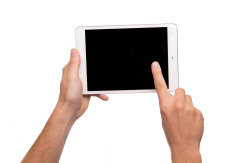 Recent trends in the business literature show a significant focus on the mechanics of the culture of organizations. Annual training reinforcing the quality and compliance requirements of organizations is a common end-of-year task. To provide some context for the training, it is important to look at the synergy between the cultures of compliance and quality, and how that synergy supports customer satisfaction. Continue reading
Recent trends in the business literature show a significant focus on the mechanics of the culture of organizations. Annual training reinforcing the quality and compliance requirements of organizations is a common end-of-year task. To provide some context for the training, it is important to look at the synergy between the cultures of compliance and quality, and how that synergy supports customer satisfaction. Continue reading
Tag Archives: mobile
Leveraging Customer Feedback to Drive Successful HIT Partnerships
Customer feedback is a critical piece of any commercial relationship, and its impact in health IT can be particularly valuable – but timing is everything. For other industries, customer feedback surveys and Likert scales at the end of a project may be effective means of measuring satisfaction. In healthcare, this type of qualitative feedback is often too little too late. IT vendors need to evaluate the customer’s perception of the product and its value at each stage of integration. Continue reading
customer feedback surveys and Likert scales at the end of a project may be effective means of measuring satisfaction. In healthcare, this type of qualitative feedback is often too little too late. IT vendors need to evaluate the customer’s perception of the product and its value at each stage of integration. Continue reading
Harnessing Early Adopters in Health IT
 Part of the thrill of working in health IT comes from bringing something more than just a cool widget to market. As a nurse myself, I want to help fellow clinicians with software that solves problems. And, as part of the development process, we seek to partner with health systems to address their specific challenges.
Part of the thrill of working in health IT comes from bringing something more than just a cool widget to market. As a nurse myself, I want to help fellow clinicians with software that solves problems. And, as part of the development process, we seek to partner with health systems to address their specific challenges.
Of course, not every health system can serve as an IT partner – but luckily, some customers are in a position to play a larger role by acting as early adopters. Continue reading
The Measurement of Healthcare Quality
What is quality? The dictionary defines quality as “a peculiar and essential  characteristic; an inherent feature; or a degree of excellence.” For many charged with leading quality in healthcare, quality is often measured as a success in certification, a successful audit, or decreasing rejections. Instead, quality should be measured by what is experienced directly by the customer, the “value added” of what was received, and/or the perception of provider that was involved in the interaction, as both are customers of the healthcare institution.
characteristic; an inherent feature; or a degree of excellence.” For many charged with leading quality in healthcare, quality is often measured as a success in certification, a successful audit, or decreasing rejections. Instead, quality should be measured by what is experienced directly by the customer, the “value added” of what was received, and/or the perception of provider that was involved in the interaction, as both are customers of the healthcare institution.
Engaging Your Consumer: The New Wave of Healthcare Business
One of the major transformations in healthcare today centers on the development of the patient as a consumer. Patients are driving a demand for increased connectivity with their providers, and have a growing expectation for convenient and customizable care.
patient as a consumer. Patients are driving a demand for increased connectivity with their providers, and have a growing expectation for convenient and customizable care.
As the consumerization of healthcare continues to evolve, the patient will play a larger role in overall healthcare IT strategy. As a result, health IT vendors will need to address changing consumer demands in an age of instant gratification and convenience. What are the driving forces behind this shift?
Unifying the Healthcare Assembly Line
 Driving toward value-based care first requires a healthy understanding of the environment in which we are operating. Though regularly criticized, the U.S. healthcare system is actually strong: we have some of the world’s best hospitals and doctors. Individual service lines can provide attentive and effective care, whether it is cardiology, endocrinology or oncology.
Driving toward value-based care first requires a healthy understanding of the environment in which we are operating. Though regularly criticized, the U.S. healthcare system is actually strong: we have some of the world’s best hospitals and doctors. Individual service lines can provide attentive and effective care, whether it is cardiology, endocrinology or oncology.
However, we are falling short by failing to pull these service lines together. That is where the challenge lies. By focusing on wellness, we have the capability to deliver collaborative care and truly transformative outcomes.
Three Ways Technology Can Address Healthcare’s Growing Pains
 Science and medicine continue to advance at an astonishing rate thanks to technological innovation. We have already seen digital health solutions that promise to transform patient care in our lifetime. While these advancements are indeed groundbreaking for the healthcare industry, there are still basic day-to-day care processes in hospitals across the country ripe for improvement by applying technology.
Science and medicine continue to advance at an astonishing rate thanks to technological innovation. We have already seen digital health solutions that promise to transform patient care in our lifetime. While these advancements are indeed groundbreaking for the healthcare industry, there are still basic day-to-day care processes in hospitals across the country ripe for improvement by applying technology.
2018: Shifting Healthcare’s Mindset to the Mobile Patient
 This past year, 2017, has been a challenging year for many industries, and healthcare is certainly no exception. Not only are there major challenges connected to an increasingly aging population and outdated healthcare infrastructure, but the industry is also adapting to the policies associated with a new presidential administration. While technology will continue to be a key part of the future of healthcare, one of the biggest changes will be a shift in mindset from mobile technology to mobile patients.
This past year, 2017, has been a challenging year for many industries, and healthcare is certainly no exception. Not only are there major challenges connected to an increasingly aging population and outdated healthcare infrastructure, but the industry is also adapting to the policies associated with a new presidential administration. While technology will continue to be a key part of the future of healthcare, one of the biggest changes will be a shift in mindset from mobile technology to mobile patients.
Nurse-Physician Collaboration: Harnessing the Power of Health IT to Improve Patient Outcomes
 Most physicians have long enjoyed the benefits of Bring Your Own Device (BYOD) policies. As health systems focused on ensuring doctors had access to state-of-the-art health IT to monitor their patients when they couldn’t be at the bedside, the quality of tools and pace of adoption for nursing solutions did not keep up. In some situations, nurses received bulky phones that could only be used within the walls of the hospital, while physicians needed to download specific apps on their own devices to receive calls from the nurses’ devices. Technical difficulties were frequent. In other situations, health systems tried rolling out solutions to nurses that had been used successfully by physicians. Unfortunately, those solutions were not always conducive to nurses’ workflow.
Most physicians have long enjoyed the benefits of Bring Your Own Device (BYOD) policies. As health systems focused on ensuring doctors had access to state-of-the-art health IT to monitor their patients when they couldn’t be at the bedside, the quality of tools and pace of adoption for nursing solutions did not keep up. In some situations, nurses received bulky phones that could only be used within the walls of the hospital, while physicians needed to download specific apps on their own devices to receive calls from the nurses’ devices. Technical difficulties were frequent. In other situations, health systems tried rolling out solutions to nurses that had been used successfully by physicians. Unfortunately, those solutions were not always conducive to nurses’ workflow.
Successfully Approaching M&As in Healthcare IT
 Over the past couple of years, there have been around 200 merger and acquisition (M&A) deals in the healthcare IT space, driven by high enterprise value and the sheer size of the industry. 49 deals came together in the first quarter of this year alone. These numbers make health IT the highest performing industry in terms of M&A activity in the consumer and retail space, and the second highest in the infrastructure/industrial space.
Over the past couple of years, there have been around 200 merger and acquisition (M&A) deals in the healthcare IT space, driven by high enterprise value and the sheer size of the industry. 49 deals came together in the first quarter of this year alone. These numbers make health IT the highest performing industry in terms of M&A activity in the consumer and retail space, and the second highest in the infrastructure/industrial space.
Between 2018 and 2019, we will see an insatiable need for increased health IT interoperability, with providers putting increased pressure on health IT vendors to deliver. This pressure – combined with the shift brought on by new regulations like MACRA around performance, measurement and outcomes – will drive one of the biggest M&A pushes we’ve seen in the health IT industry.
